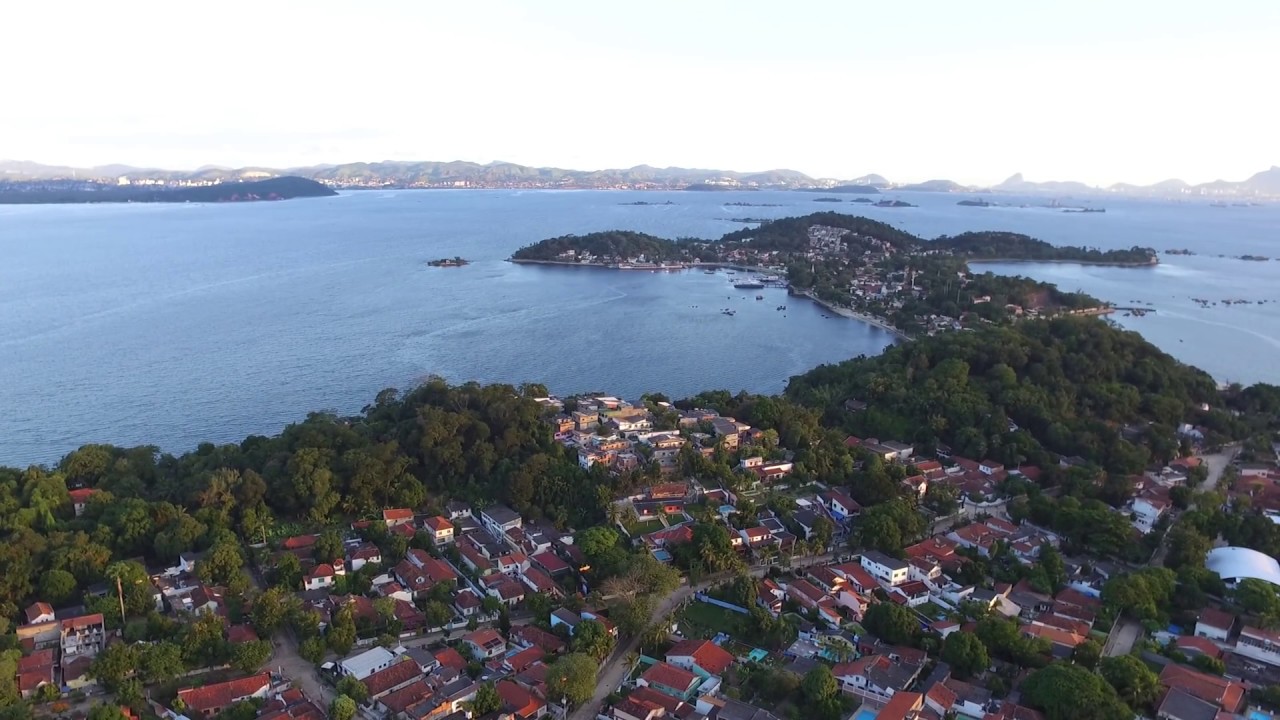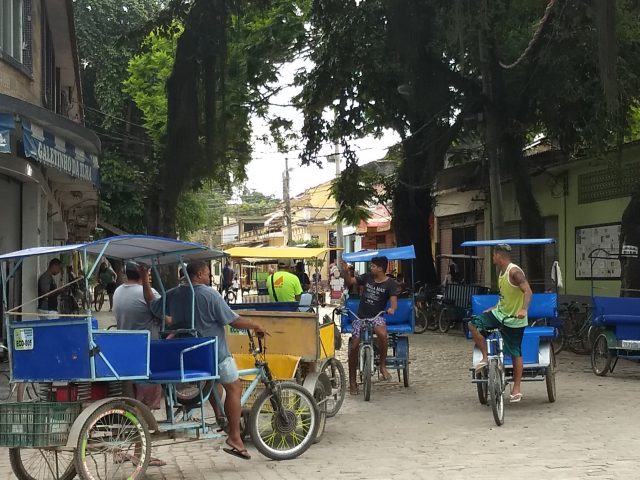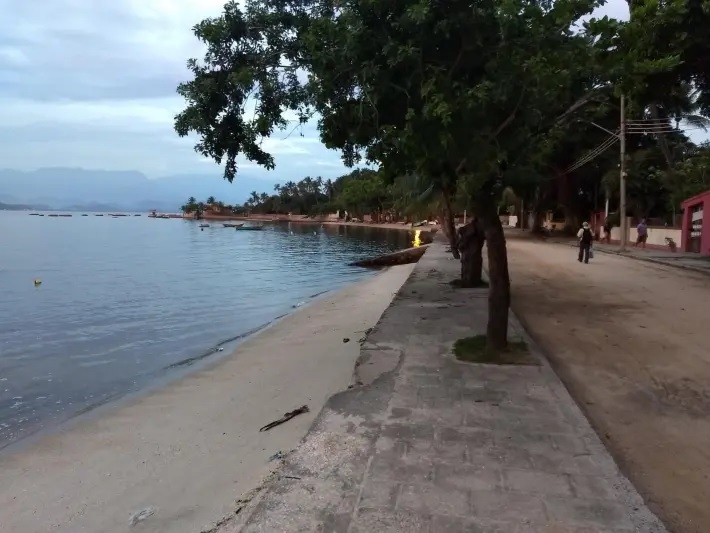RIO DE JANEIRO, BRAZIL – Paquetá is a neighborhood in Rio. Like so many others, it has streets, people, houses, bandstand, post office, banks, garbage collection service.
But Paquetá has two very special features. The first is that it is on an island, in the middle of Guanabara Bay. The second is that cars and motorcycles are not allowed there.

Streets with no cars
The pleasure of wandering around in a car-free city shows how conditioned our daily lives are by them. We live in the midst of traffic, immersed in the noise of engines and horns. And we have to look everywhere to make sure we do not get run over, sometimes even on the sidewalk. In Paquetá, people walk calmly on the street, unafraid, and in no hurry.
To get there, it takes 50 minutes by boat from the ‘Praça XV’ (“XV Square”) in downtown Rio. The icy air conditioning of the ferry is a rite of passage between the noise and energy of downtown Rio to another reality.
On arrival, the friendly square announces a car-free world. In Rio, taxis, cars, and trams. In Paquetá, bicycle taxis, bicycles, and electric buggies. No traffic. Pedestrians and bicycles only. Paquetá is just like that.
Walking a little further, the streets are the same as in a ‘normal’ city, but without the cars. There are even sidewalks, which is strange because people walk, pedal, chat on the street. There are no apartment buildings and most of the houses still preserve the low walls. There is an almost uncontrollable urge to greet everyone one meets.
The island is not large, less than 3 km from end to end. One can go from Darke de Matos Park to the Preventório, two attractions on opposite sides, in only half an hour. But the best thing is to take it easy, enjoying the silence, the houses from another era, the solidity of old trees.
If daylight strolling is good, at night it’s even better. Enjoying the cool evening to walk for hours around the island to experience life outside Rio de Janeiro.

Bicycles that scrape off the gravel from the streets, the whispering of the soft waves, some motion around the few open bars, one or another small bird. For the rest, only silence. And a rare sense of tranquility and safety. After all, according to a resident, an eventual thief would be caught queuing up at the ferry the next day.
Famous and anonymous on the island
The island’s pavement has been crossed by people of all kinds since colonial times.
Dom João VI arrived in Paquetá to escape from a storm and liked it so much that he started to visit the island regularly. José Bonifácio de Andrada e Silva served house arrest in his beautiful seafront home, after being charged with plotting to bring D. Pedro I back to Brazil. The director of Globo Jorge Fernandes, who died recently, owned a home on the island.
But it was a fictional character who helped shape the local toponymy.
It’s Moreninha, the main character in Joaquim Manuel de Macedo’s 1844 novel, which has been a success since its release. The book does not mention Paquetá once, but someone suggested that the island in the story could only be it. And so, the legend was born and the main local attraction, the Moreninha rock, emerged on the current Moreninha beach. The friendly little square across the street is named after the writer.
The Globo 1970 ‘telenovela’ (soap opera), by the same name, also brought extra notoriety to a little house on the other side of the island that served as the setting. Pink and beautiful, the house is there to this day, overlooking the Bay.

Threats
Wonderful places attract all kinds of people. During the Carnaval festivities, groups of thousands of people take the ferry towards the island, disrupting the quiet and intimacy and bringing with them the typical conflicts when a crowd invades any place.
The goods, gas, and garbage delivery trucks break the silence, carrying the tourists’ beer, the residents’ sofa and the bricks of the new homes. They are few but conjure up the noise and instability that the island may experience if it grows too much. Today, the island has fewer than 5,000 inhabitants.
A further risk seems to be the speed of the electric buggies, which replaced the horse-drawn carriages in 2016, much faster than Paquetá’s pace would suggest.
And there is still the pollution of the bay, which was even the object of a clean-up pledge for Rio’s Olympic Games, but which was forgotten. One can swim only on some days and only on a few beaches.

